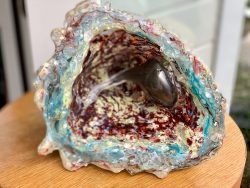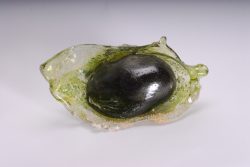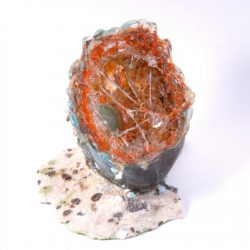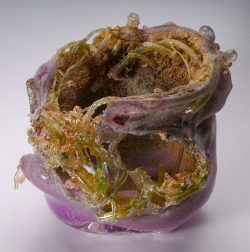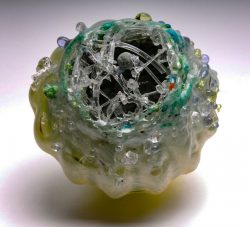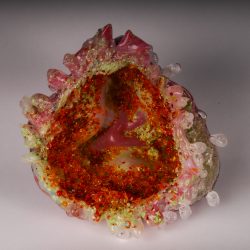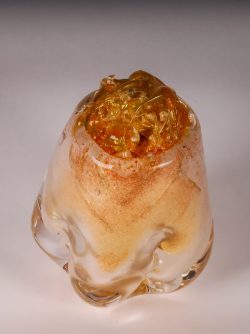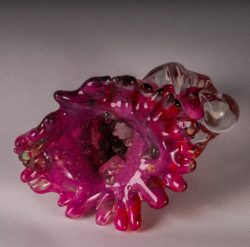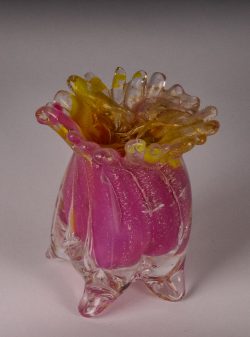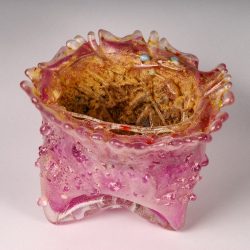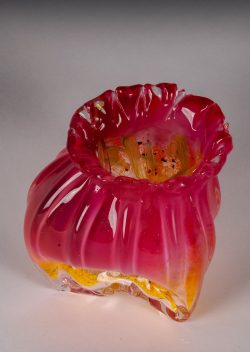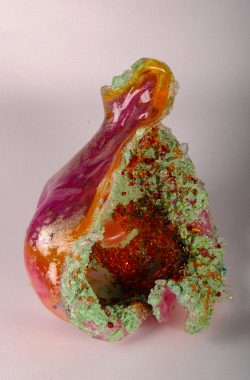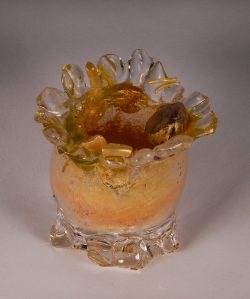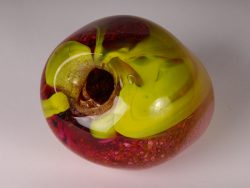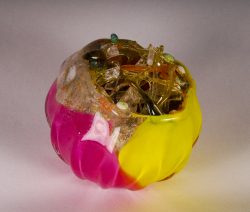Sally Rockriver
“I grow geological formations at 2000 degrees during the glass blowing process. Chemical reactions create a new world that we might find on another planet. Although reminiscent of underwater lifeforms and the earth’s geology, the work is not an imitation of life. It is a scientific formation of an undiscovered possibility”
— Sally Resnik Rockriver
See the Urban Glass article: 3 Questions For Sally Resnik Rockriver
Read this artist's biography
Note from the artist
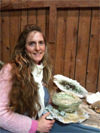 I am a glassblower who uses chemical reactions as a medium. While my pieces are reminiscent of unfound worlds and liquid motion, my approach is not representational. Works appear as though they are real geology, because they contain the same scientific ingredients found in nature. I activate glass and ceramic materials by using thermal processes. My final pieces are enhanced outgrowths of an original experiment. A controlled framework accentuates the tendency of a particular material and results in new geologies not found in this Planet.
I am a glassblower who uses chemical reactions as a medium. While my pieces are reminiscent of unfound worlds and liquid motion, my approach is not representational. Works appear as though they are real geology, because they contain the same scientific ingredients found in nature. I activate glass and ceramic materials by using thermal processes. My final pieces are enhanced outgrowths of an original experiment. A controlled framework accentuates the tendency of a particular material and results in new geologies not found in this Planet.
About the work
In 1996, Sally Resnik Rockriver believed there were other planets with chemicals, physics, and heat similar to those in her studio. In 2005, she entitled her geological blown glass: “New Planets”. This body of work utilized planetary geochemistry and physics to create worlds that she thought could be in the Universe. In 2013, NASA announced the discovery of the Planet HD 189733b “Azure”, which recirculates molten sand and glass. Rockriver’s current work features the Planet Azure and its glass storms. In her pieces, sprays of glass cool into a crystalline webbing. Gases erupt from molten pools and grow into enormous domes that trap colored fumes. The final works are “Frozen Moments” of a geochemical event. Rockriver expresses her vision while harnessing a scientific process that informs the content of her work.
Founder of the movement
By the turn of the century, Rockriver’s work was considered too experimental and not technically sound. However, her processes were actually carefully crafted techniques that created specific geological results. Few artists or collectors had seen the combination of glass and ceramics. Her main sympathizers were the minds of Contemporary Art. During her 2002 solo exhibition in New York, she was hailed by Roberta Smith in the New York Times, as “some kind of contender”. By 2004, her combination of glass and ceramics was recognized by the ceramics world in the Ceramics Monthly cover article. It took a decade for Rockriver’s work to be valued by the glass audience. In 2010, Jessamy Kelly received her wrote her PhD dissertation on the combination of glass and ceramics. She researched the glass artists of the world, and found only a handful that were pertinent to the study. Upon final evaluation, Rockriver had the earliest work that combined glass and ceramics at high temperatures. In 2012, at the Ox-bow School of Art , Rockriver taught an intensive course entitled Beyond the Limits which required students to approach the medium without inhibition by 2013, Rockriver had influenced a generation of young artists who embraced experimental glass processes as art.
PROCESSES:
Fume blown processes
The spherical forms are influenced by the reactive effect of heated chemicals. By trapping ceramic glazes into molten glass, the hot salts release a gas that provides enough pressure to blow a bubble. The resulting form is a hollow orb with exploded powder bouncing around the interior.When the gases remain trapped, they deposit a dark metallic smoke. Escape holes are melted into some peices to allow fumes to escape. This results in a clear sparkling dome that can be peered into.
Blown glass with ceramic glazes
Dried ceramic glazes are poured into a blown glass vessel during the puntied phase of the blowing process. As they are introduced into the glory hole, glazes will crackle, bubble, web, or fuse. The altered surface will form differing textures depending on the depth of heating.
Inclusive of equipment residue
One of the characteristic of Rockriver’s approach is that she find interest out the outskirts of the medium. It was the encorporation of kiln residue that put her work in the context of its creation. she was able to break away from the vessel and clearly show her works a geological spaces. Her finished pieces nest in a harvested foundation from her glory hole floor and became landscapes of a unfound world.
“The works Sally creates can leave us feeling as if we have actually traveled into the unknown to find glass that remains after an eruption. Perhaps we will find a carbon bubble frozen in time, or jewels encrusted along a volcanic crater. Rockriver’s art allows us to live in a beautiful world that is much more exotic than our own. We become aware that sudden forces instantly transform the landscapes of planets in faraway galaxies, just as it happened on Earth. She makes us realize, that somewhere, if a hot meteor hit solid silica ground, the heated surface could burst into tendrils of glass that explode from a newly created hole.” Mike Lamastra



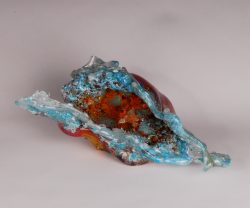
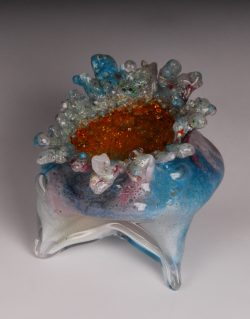 SOLD
SOLD
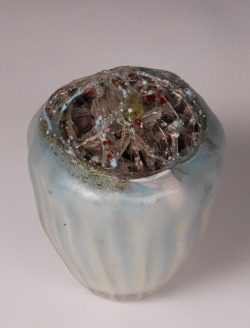
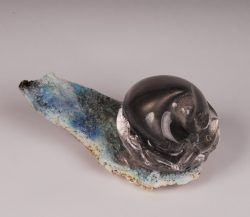
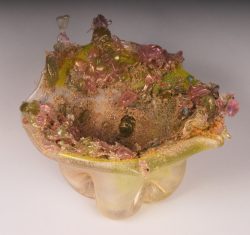
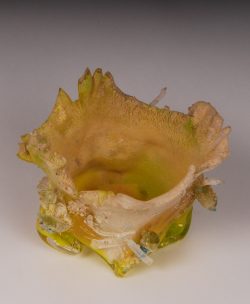
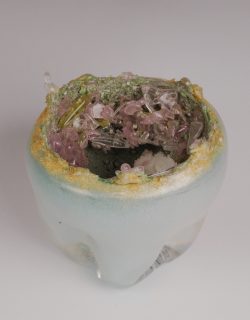

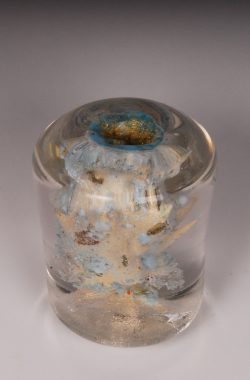
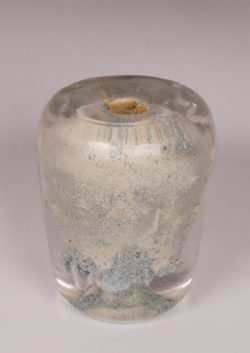
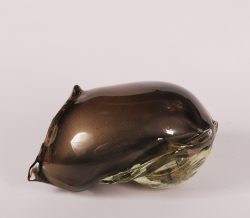
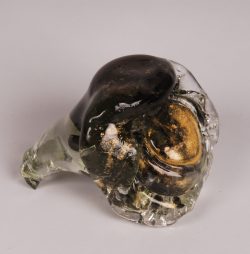
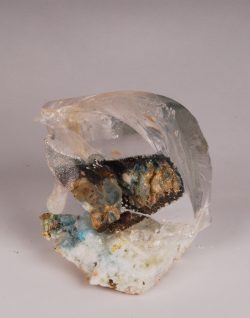
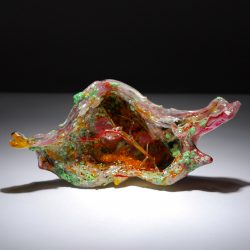
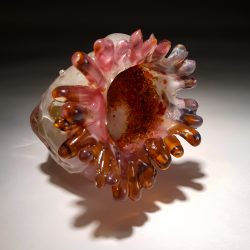 SOLD
SOLD
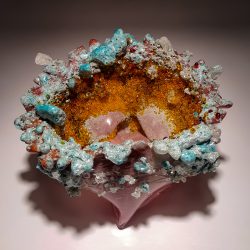
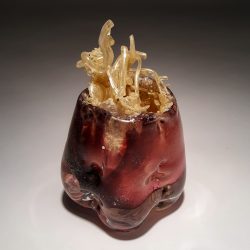
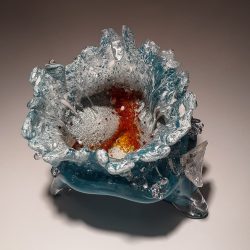
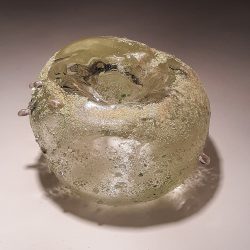
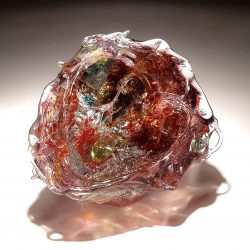 SOLD
SOLD
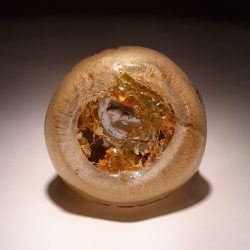
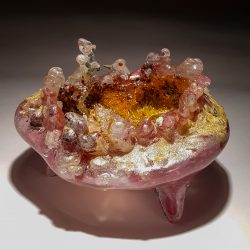
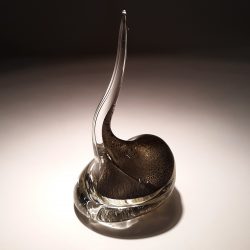
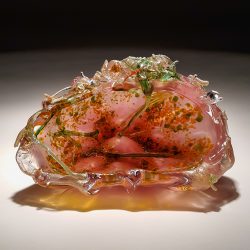
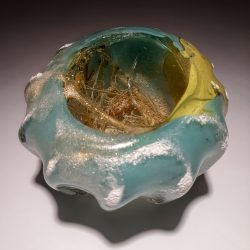

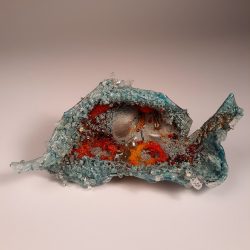
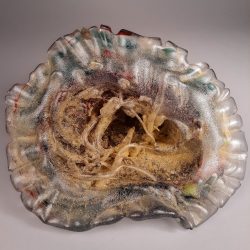
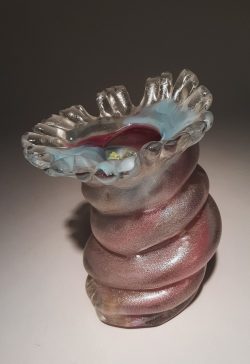
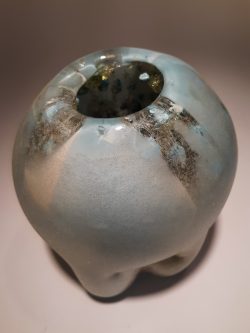
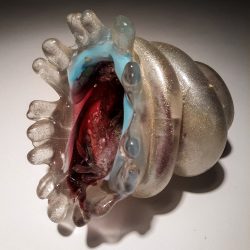
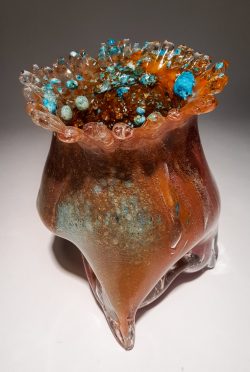
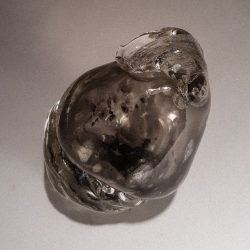
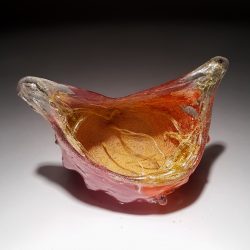 SOLD
SOLD


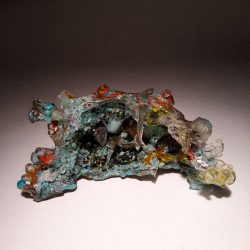 SOLD
SOLD
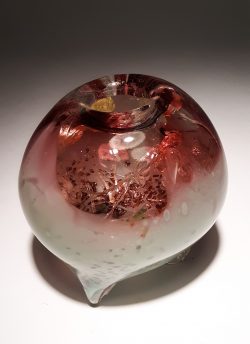 SOLD
SOLD
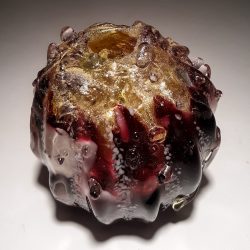 SOLD
SOLD
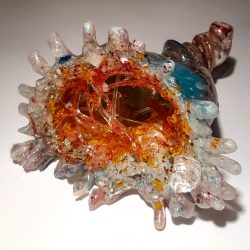 SOLD
SOLD
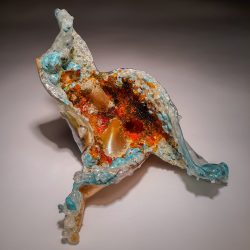 SOLD
SOLD


